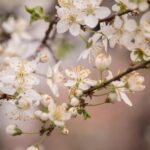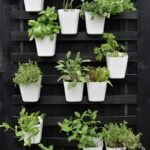A beautifully landscaped front yard can greatly enhance the curb appeal of your home, creating a welcoming and inviting atmosphere for both you and your guests. In this article, we will explore landscaping ideas for front yard that will help you transform your outdoor space into a stunning showcase of natural beauty and design.
Whether you’re looking to add colorful flowers, create a striking focal point, or incorporate hardscaping elements, we’ve got you covered with expert tips and inspiration to elevate your front yard.
Assessing the layout and size of your front yard is the first step in planning your landscaping project. Understanding the unique characteristics of your outdoor space will allow you to make informed decisions when choosing plants, designing focal points, and integrating hardscaping elements. By carefully evaluating these factors, you can create a cohesive and visually appealing landscape that complements the architectural style of your home.
Selecting the right plants is crucial in achieving a thriving front yard landscape. From vibrant flower beds to lush greenery, choosing flora that suits your climate, sunlight exposure, and soil type is essential for creating an eye-catching garden. With our tips for selecting the best plants for your front yard, you’ll be able to create a beautiful botanical display that enhances the overall aesthetic of your outdoor space.
Assessing Your Space
When it comes to landscaping ideas for front yard, one of the first steps in the process is assessing the space you have to work with. Understanding the layout and size of your front yard will help you make informed decisions about the design and overall look you want to achieve. Here are some important factors to consider as you assess your space:
1. Measure the dimensions of your front yard – Before diving into any landscaping project, it’s crucial to know the exact measurements of your outdoor space. This will help you determine how much room you have for planting beds, hardscaping elements, and other features.
2. Take note of existing features – Whether it’s a large tree, a mailbox, or a pathway, take note of any existing features in your front yard that you want to incorporate into your landscaping design. These features can serve as focal points or be used to guide the layout of your new design.
3. Consider sun exposure and soil quality – Pay attention to how much sunlight different areas of your front yard receive throughout the day, as well as the quality of the soil. This information will be essential when selecting plants that will thrive in your specific environment.
By taking these factors into account when assessing your space, you’ll be better equipped to create a comprehensive landscaping plan that suits both your style and the practical needs of your front yard. Remember that every front yard is unique, so embrace the characteristics that make yours special while working on transforming it into a stunning outdoor oasis.
Choosing the Right Plants
When it comes to landscaping ideas for front yard, choosing the right plants is essential for creating a visually appealing and well-balanced outdoor space. Whether you have a large or small front yard, selecting the best flora can make a significant difference in the overall look and feel of your landscape. Here are some tips for choosing the right plants for your front yard:
- Consider the Climate: Before selecting any plants for your front yard, it’s important to take into account the climate in your area. Choose flora that is suitable for the specific weather conditions and temperature variations of your region.
- Think About Maintenance: Determine how much time and effort you are willing to spend on maintaining your front yard. Select low-maintenance plants if you prefer minimal upkeep, or opt for flowers and shrubs that require regular care if gardening is a hobby.
- Focus on Variety: Create visual interest in your front yard by incorporating a variety of plants with different colors, heights, textures, and blooming seasons. This will add depth and dimension to your landscape.
In addition to these tips, it’s important to take into consideration the layout and size of your front yard when choosing plants. For example, if you have limited space, consider vertical gardening or planting smaller bushes and flowers to maximize the area.
Ultimately, selecting the right plants for your front yard is a personal decision that should reflect your style preferences and landscaping goals. Whether you prefer a lush garden full of vibrant flowers or a more minimalist approach with evergreen shrubs, choosing plants that complement your home’s architecture and create curb appeal is key in achieving a beautiful front yard landscape.
Creating a Focal Point
When it comes to front yard landscaping, one of the key elements to consider is creating a focal point that will draw attention and enhance the overall aesthetic of your outdoor space. Whether it’s a striking sculpture, a beautifully landscaped garden, or a unique architectural feature, a well-designed centerpiece can elevate the look of your front yard.
One of the popular landscaping ideas for front yard focal points is a carefully curated garden filled with vibrant flowers and plants. By selecting a variety of flora that bloom at different times of the year, you can ensure that your garden remains visually appealing throughout the seasons. In addition, incorporating elements such as decorative rocks, water features, or even an ornate bird bath can further enhance the charm of your garden as a focal point.
For those with larger front yards, consider adding an architectural element such as a pergola or trellis to create visual interest and provide an ideal setting for climbing plants such as ivy or wisteria. This not only adds height and dimension to your landscape but also creates a sense of depth and structure.
It’s important to remember that when designing a focal point for your front yard, balance is key. You want to create something that catches the eye without overwhelming the rest of your landscaping.
This can be achieved by carefully considering the scale and proportions of your focal point in relation to the surrounding elements in your front yard. By keeping these considerations in mind, you can ensure that your front yard has a stunning centerpiece that ties everything together harmoniously.
Adding Hardscaping Elements
When it comes to landscaping the front yard, incorporating hardscaping elements can add both functionality and aesthetic appeal. Pathways not only provide a practical way to navigate the space but also create visual interest. Whether you choose natural stone, brick, or concrete pavers, selecting the right material can significantly enhance the overall look of your front yard. Additionally, adding structural features such as retaining walls or decorative fences can help define the space and create a sense of privacy.
Incorporating pathways in your front yard not only adds to its visual appeal but also serves a practical purpose. Whether it’s a meandering pathway leading up to your home’s entrance or a direct route from the driveway, carefully planned pathways can enhance the flow and functionality of your outdoor space. Consider using materials that complement your home’s exterior design and landscaping style for a cohesive look that ties everything together.
Another aspect of hardscaping elements is choosing the right type of pavers for your front yard. There are various options available including natural stone, brick, and concrete pavers – each with its own unique characteristics and aesthetic appeal. The right choice will depend on factors such as maintenance requirements, durability, and cost. By considering these factors along with your personal preferences, you can select pavers that not only withstand foot traffic but also add beauty to your front yard.
| Hardscaping Element | Considerations |
|---|---|
| Pathways | Enhance flow & functionality; Complement home’s exterior |
| Pavers | Maintenance requirements; Durability; Cost; Aesthetic appeal |
Utilizing Lighting
When it comes to landscaping ideas for front yard, one element that can truly enhance the beauty of your outdoor space is the use of outdoor lighting. Whether you want to create a welcoming ambiance, highlight certain features, or simply add a touch of elegance, utilizing lighting in your front yard can make a big impact.
Types of Outdoor Lighting
There are various types of outdoor lighting options to consider for your front yard. From pathway lights and spotlights to string lights and decorative lanterns, each type serves a different purpose. Pathway lights can guide visitors to your front door, while spotlights can highlight architectural elements or specific plants. String lights and lanterns can add a warm and inviting glow to the entire space.
Placement and Design
When it comes to utilizing lighting in your front yard, placement is key. Strategically placed lights can help create focal points and draw attention to certain areas. For example, placing lights at the base of trees or shrubs can cast beautiful shadows and add dimension to your landscaping. Additionally, consider the design aspect of your lighting fixtures – whether you prefer modern and sleek or traditional and rustic, there are plenty of options to choose from.
Benefits of Outdoor Lighting
In addition to enhancing the aesthetic appeal of your front yard, outdoor lighting also provides added security and safety benefits. A well-lit exterior can deter potential intruders and provide better visibility for you and your guests at night.
Moreover, outdoor lighting allows you to enjoy your front yard even after dark, creating an inviting atmosphere for evening gatherings or simply relaxing outdoors. Ultimately, utilizing lighting in your front yard landscaping not only beautifies the space but also adds functionality and practicality.
Maintaining Your Landscape
Regular Maintenance
Once you have completed the landscaping of your front yard, it’s important to keep up with regular maintenance to ensure that your outdoor space continues to look beautiful year-round. This includes tasks such as mowing the lawn, trimming hedges and shrubs, weeding flower beds, and removing any debris or dead foliage. By staying on top of these tasks, you can prevent your front yard from becoming overgrown and untidy.
Seasonal Care
Different seasons call for different maintenance tasks in your front yard. In the fall, you may need to rake leaves and prepare your plants for the colder weather. During the winter, it’s important to protect your plants from frost and snow.
Spring brings a need for planting new flowers and refreshing mulch, while summer often involves more frequent watering and managing pests. By understanding the seasonal needs of your landscape, you can ensure that it looks its best throughout the year.
Professional Assistance
If maintaining your front yard becomes overwhelming or if you lack the time or expertise to keep up with it properly, consider enlisting the help of professional landscapers. They can provide regular maintenance services such as lawn care, trimming, fertilizing, and pest control.
A professional can also help you address any issues that arise with your plants or hardscaping elements. Investing in professional assistance can help ensure that your front yard remains pristine and well-maintained without added stress on yourself.
Showcasing Inspiration
When it comes to front yard landscaping, drawing inspiration from real-life success stories can be incredibly helpful in finding ideas that work for your own space. One popular trend in front yard landscaping is the use of native plants and wildflowers to create a natural and low-maintenance garden. By incorporating these types of flora into your landscaping design, you can attract local wildlife such as birds, butterflies, and bees to your front yard.
Another inspiring idea for front yard landscaping is the use of raised garden beds or planter boxes to add dimension and visual interest to the space. You can plant a variety of flowers, herbs, or even vegetables in these beds, creating a colorful and functional display that will enhance the curb appeal of your home.
In addition to traditional greenery, some homeowners are turning to non-traditional landscaping elements such as rock gardens or water features for their front yards. These unique additions can add a sense of tranquility and sophistication to your outdoor space while also serving as eye-catching focal points. Incorporating elements like these into your front yard can help make your home stand out in the neighborhood and leave a lasting impression on visitors.
| Front Yard Landscaping Idea | Description |
|---|---|
| Native Plants and Wildflowers | Create a natural and low-maintenance garden while attracting local wildlife |
| Raised Garden Beds or Planter Boxes | Add dimension and visual interest with colorful flowers, herbs, or vegetables |
| Rock Gardens or Water Features | Add sophistication with unique elements that serve as eye-catching focal points |
Conclusion
In conclusion, front yard landscaping is a crucial aspect of home design and can significantly enhance the overall look and feel of your property. By carefully choosing the right plants, creating a focal point, adding hardscaping elements, incorporating lighting, and maintaining your landscape, you can create a stunning and inviting front yard that will impress your visitors and passersby.
Whether you have a small front yard or a large expanse of space to work with, there are countless landscaping ideas for front yards that can be tailored to suit your personal style and preferences.
It’s important to remember that the key to successful front yard landscaping lies in careful planning and consideration of your unique space. Take the time to assess the layout and size of your front yard before diving into any landscaping project.
This will help ensure that you make the most of your available space and create a cohesive and balanced design. Additionally, showcasing real-life examples of front yard landscaping success stories can provide valuable inspiration for readers as they embark on their own front yard transformation.
As you begin your front yard landscaping journey, keep in mind that maintenance is crucial for ensuring that your outdoor space continues to look pristine year-round. With proper care and attention, your landscaping efforts will pay off in the form of a beautiful and welcoming front yard that adds curb appeal to your home.
So why wait? Get started on implementing these landscaping ideas for your front yard today and watch as your outdoor space transforms into a stunning showcase of natural beauty.
Frequently Asked Questions
How Do I Style My Front Yard for Landscaping?
Styling your front yard for landscaping can be achieved by considering factors such as the climate, soil type, and the amount of sunlight the area receives. You can start by selecting a variety of plants, shrubs, and flowers that thrive in these conditions.
Creating defined pathways and borders with natural stones or pavers can also add visual interest to the landscape. Incorporating outdoor lighting, such as solar-powered fixtures, can enhance the overall appearance of your front yard.
How Can I Make My Front Yard Look Better on a Budget?
Making your front yard look better on a budget can be accomplished through simple and cost-effective methods. Consider adding a fresh coat of paint to your front door or updating your house numbers and mailbox to give your home an instant facelift.
Adding mulch to flower beds or planting low-maintenance ground cover plants are also affordable ways to improve curb appeal. Additionally, cleaning up any debris, mowing the lawn regularly, and keeping the walkways clear can make a significant difference without breaking the bank.
What Can I Put in My Front Yard Instead of a Tree?
If you prefer not to plant a tree in your front yard, there are several alternatives that can still provide visual interest and greenery. Consider planting native grasses or ornamental grasses for texture and movement in your yard.
Installing raised garden beds or large planters filled with flowering plants or edible vegetation is another option that adds color and life to the space without dedicating it solely to a tree. If space allows, creating a small rock garden with drought-tolerant succulents or other low-maintenance plants can also be an attractive alternative to a traditional tree planting.

Welcome to my gardening blog! I am passionate about plants and enjoy sharing my knowledge and experiences with others. In this blog, I will write about everything related to gardening, from tips on how to get started to updates on my own garden projects.





